Letter from the south-west of Cymru; Penrhyn Santes Ann (St Ann’s Head)
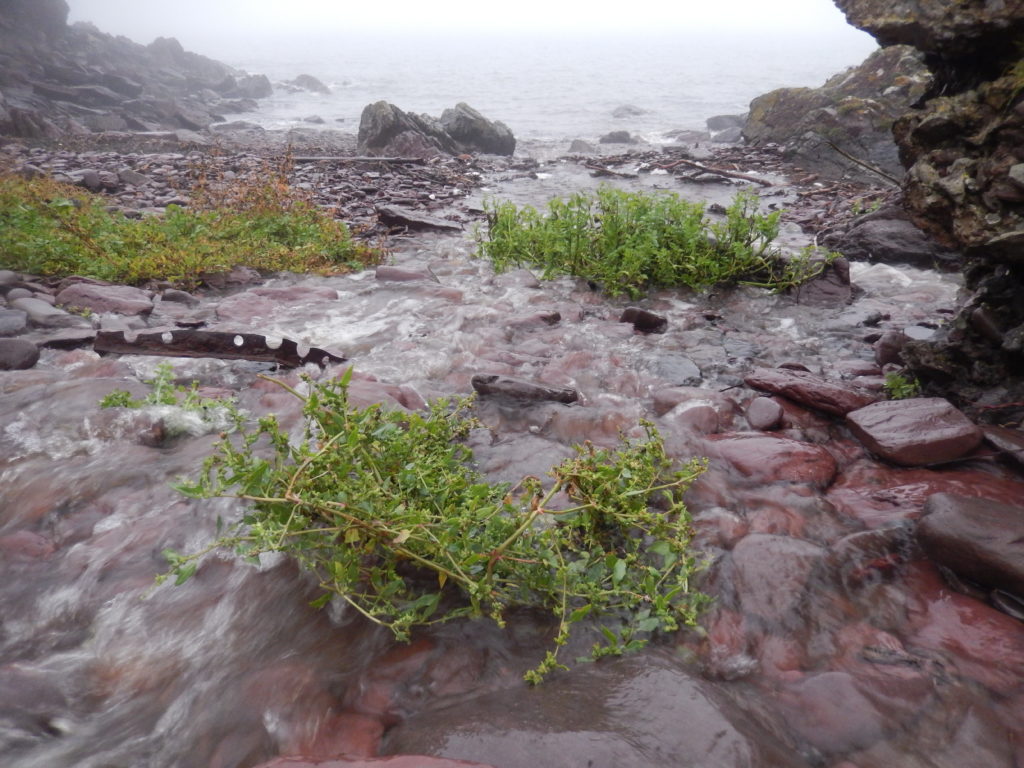
(Photo: Julie Brominicks)
The fourth and final dispatch from each of the four ‘corners’ of Cymru travelled to by bus and on foot (and in this case a hitch) from Machynlleth which is somewhere near the middle.
Julie Brominicks
Rain prickles the tent. Drumbeats and patters, a tiny percussion. All I can see of the south-west corner of Cymru, lit though it is by cloud-and-canvas filtered moon, are the undersides of slugs sliding up the inner-veil of my cocoon. So glib their glide.
The night is long but not short on special effects. The liquid crackle of light and boom and crump, come not from waves or the lighthouse, but from Castlemartin firing range. Tonight they are detonating a CR2 main battle tank, warrior AFV and various infantry small arms, endangering the sea-area 3 nautical miles west between Great Furznip and Linney Head, and 5 nautical miles south between Linney Head and St Govan’s Head. For a while I also hold them responsible for a strange sonic ringing on repeat, till recognizing what I assume, is a fog signal. Zzzzingggggg. It sounds like a wet finger circling a wine glass. Now the rain comes heavier, in rhythmic pulses, as if sieved by that same unseen hand.
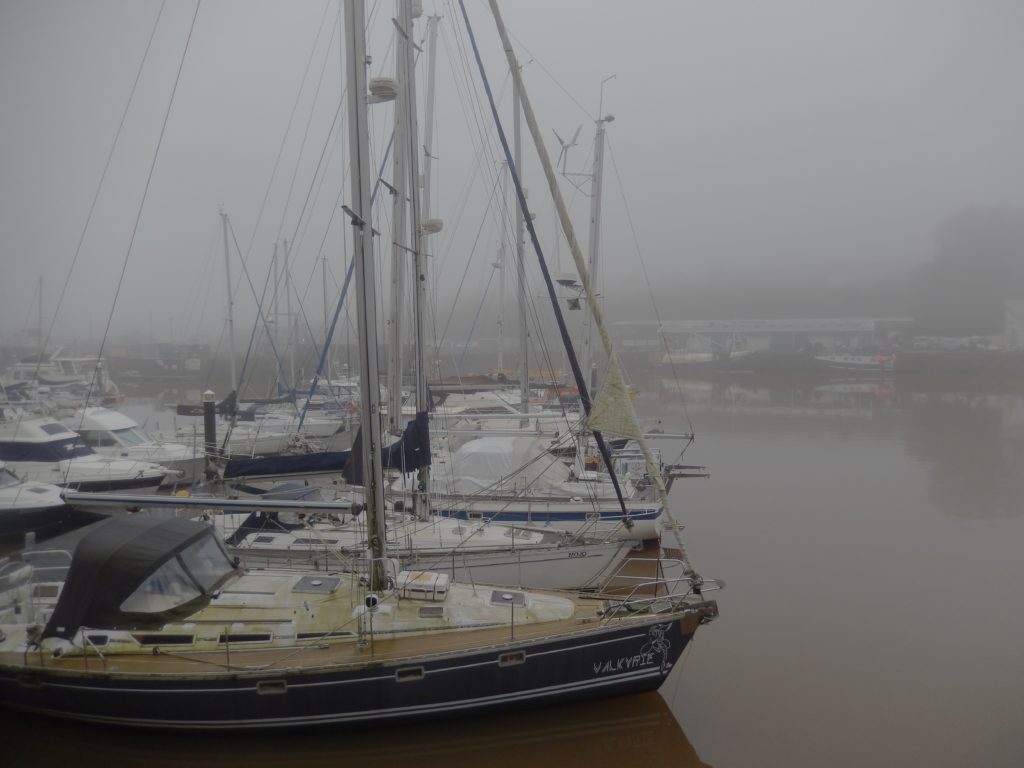
(Photo: Julie Brominicks)
I’m on Penrhyn Santes Ann (St Ann’s Head), at the mouth of Dyfrffordd Aberdaugleddau (Milford Haven Waterway.) It’s a red sandstone promontory, fissured at the edges by streams and tracks with wooded banks of moisture-sustained and retaining ferns and mosses. The lighthouse is located at the tip of the headland fenced off by the Milford Haven Port Authority who oversee the passage of ferries, yachts, cargo containers, cruise ships, and tankers using the waterway. Nearly 30 million tons of liquefied gas and crude oil are imported annually, oil refineries having been the dominant local industry since fish stocks collapsed.
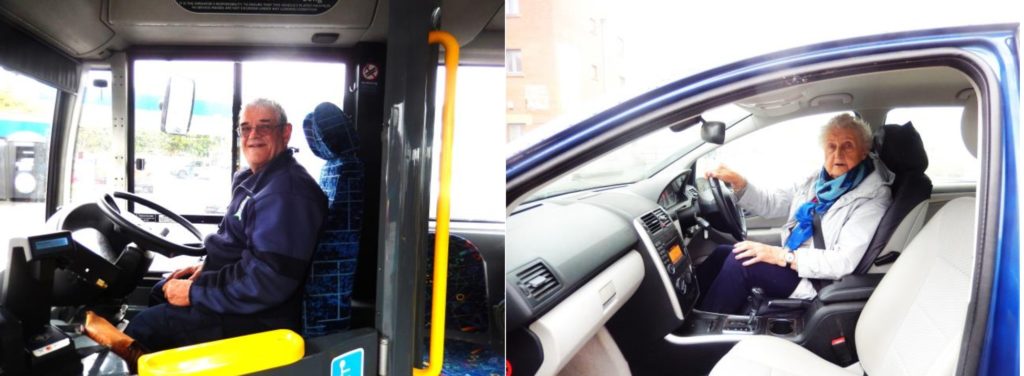
(Photo: Julie Brominicks)
It took twelve hours to get here. Six of them by bus; the 28 to Aberystwyth, the T5 to Hwlffordd (Haverford West), the 32 to Aberdaugleddau (Milford Haven) and the 30 to Herbranston, all for £8.50, the price of a West Wales Rover.
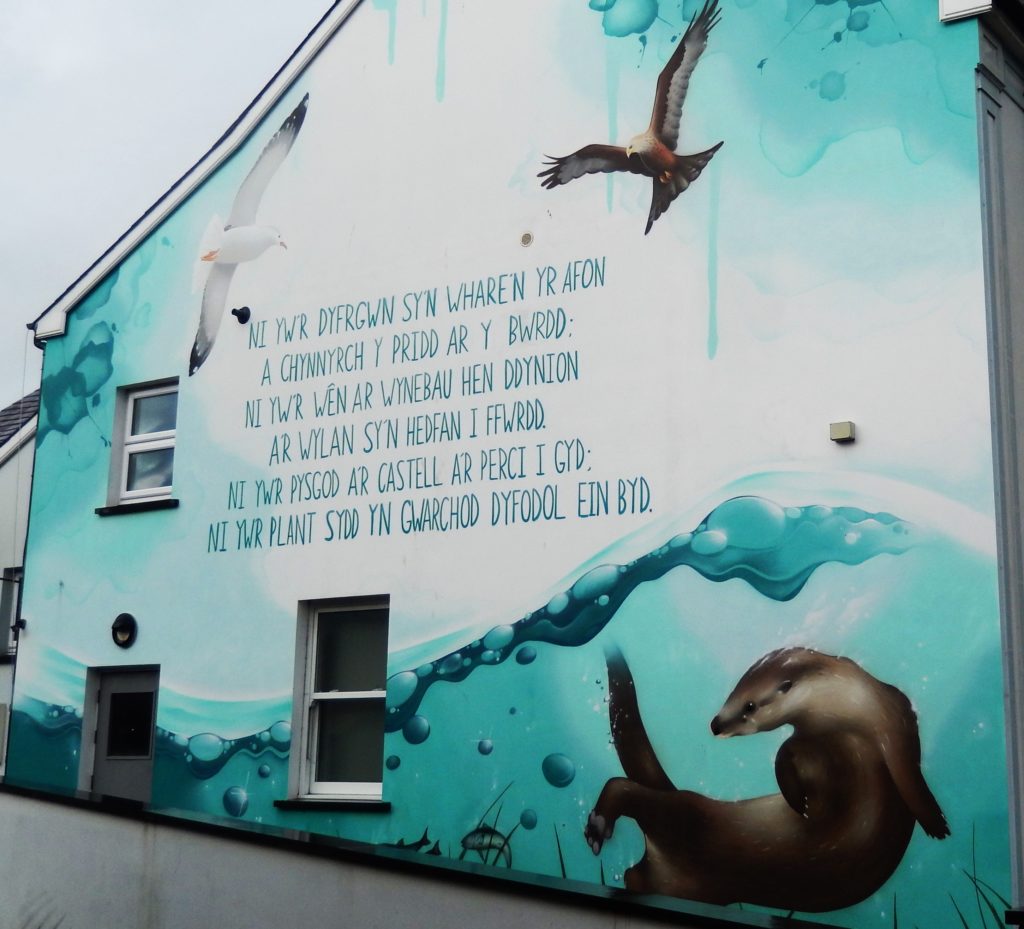
Mural in Cardigan
(Photo: Julie Brominicks)
At the outset of my journey views of the sea were lucid, but they soon dissolved in rain that grew across the window like grass. Once, the sole sound (save for the chug of the engine) was the crinkle of rizlas behind me. More often, a stream of chatter flowed. ‘Eista la!’ ‘What time’s it getting dark about?’ ‘Os ti’n mynd mas, ti’n gallu gael lie-in, fresh head for a long day ond e’ and three women who ditched their Cymraeg to accommodate an English friend at Dinas who will probably never know. The sky’s like wet ash when we pass a man on the road with a landing net and rod.
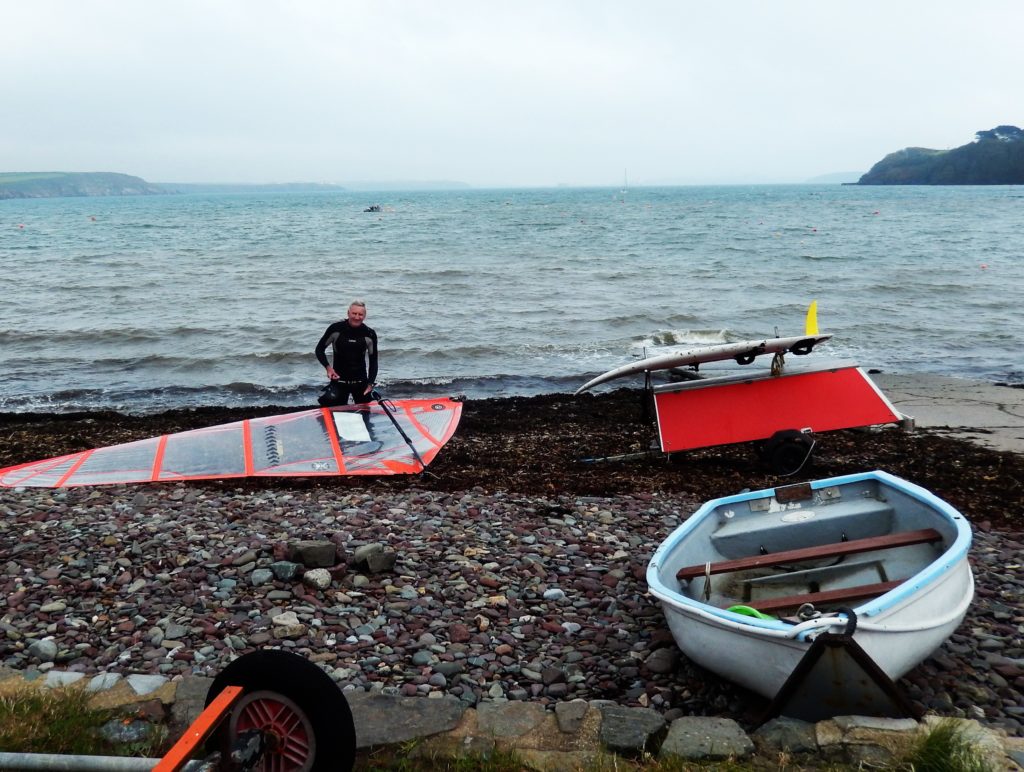
(Photo: Julie Brominicks)
Later I hitch a ride into Dale with a couple who tell me that because of the push in schools now, their kids can have secret conversations in Cymraeg they don’t understand. And the following day on my return journey, ninety-year old retired orthopaedic nurse Gwen Davies, on picking up her first ever hitcher (moi) will ask me if I speak Cymraeg. ‘Pencaer mi ges i fy ngeni, a Gymraeg i gyd’ she will tell me.
Nevertheless, as we neared Aberdaugleddau (or Milford Haven), Cymraeg fizzled out on the bus. ‘Anything but Welsh!’ snorted a woman in a floral headscarf. ‘Buy a fish!’ she added with a cackle. ‘Oh they used to be giving it away’ said her friend. ‘You’d struggle to find any now’. It’s a shame I had to rush through Milford Haven because the speculation in the broken bus stop outside Tesco as to whether the blood it was smeared in was real or fake Hallowe’en, was ever so jolly. But tide waits for no woman.
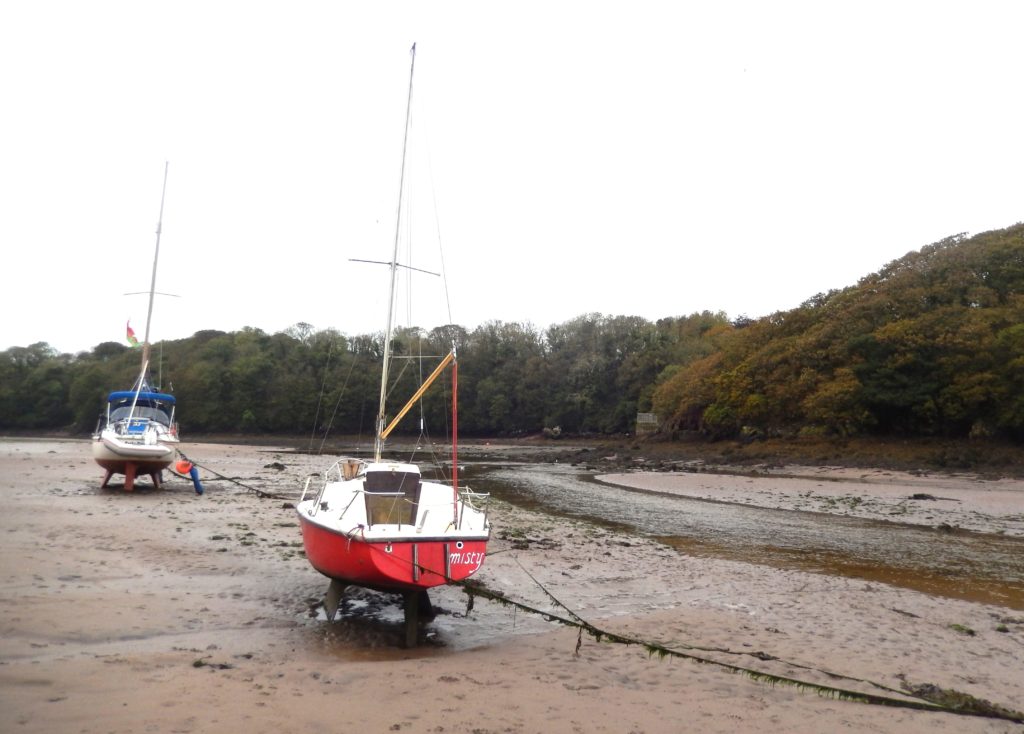
(Photo: Julie Brominicks)
Luckily it was still low enough at Sandy Haven for the crossing point across the pill to be exposed. Shore and woodland meet here. A strandline of seaweed and sticks. Limpet shells and leaves on the sand. Hawthorn hips and periwinkles on the rocks. Jackdaws and rooks and a band of long-tailed tits rippling through the sycamore, a buzzard tilting into the copse from which pied wagtails and pigeons burst, but at the water an egret, and parent herring gulls feeding a juvenile. Up creek, dunlin.
I awaited the tide on the crossing. It came bearing bladderwrack and then the buoys on the sand lifted too. A fish flipped. Water ballooned into the bay, quick it came, I grabbed my rucksack and by the time I’d crossed and looked back, the place where I’d sat was gone. The whole crossing submerged in moments.
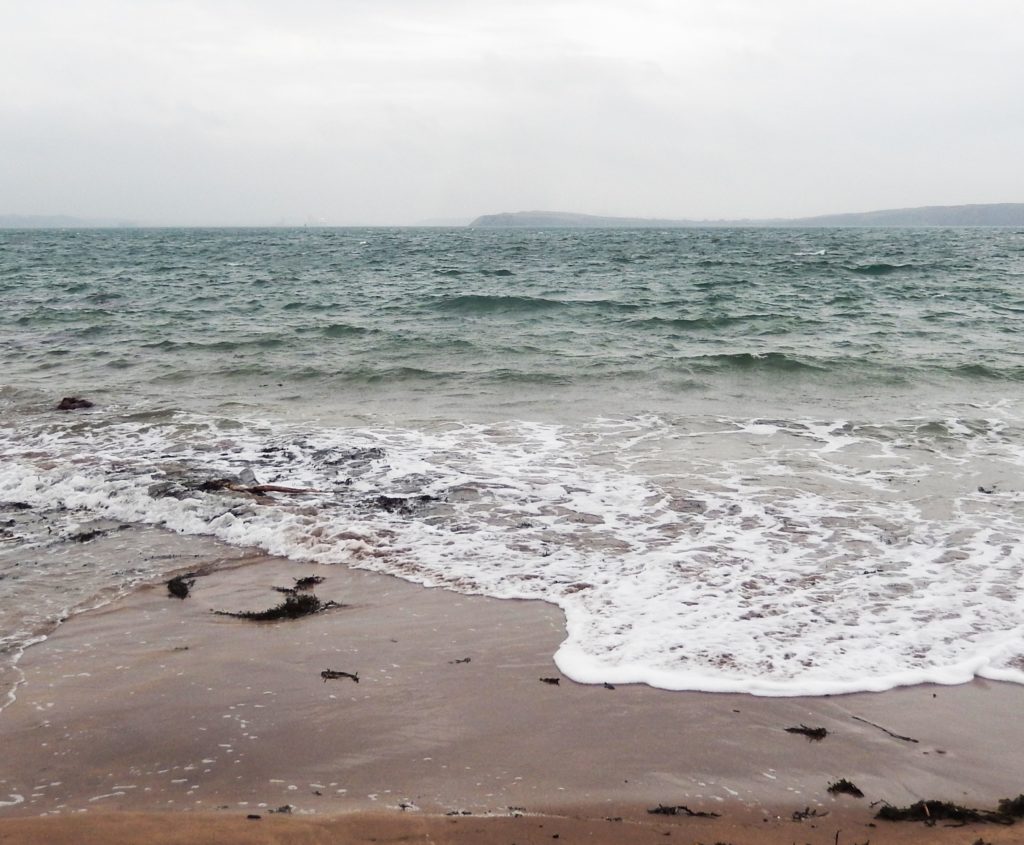
(Photo: Julie Brominicks)
I hurried along paths with views of the waterway and the refineries and CLIO (a Portuguese-registered crude oil tanker) in berth. Through St Ishmael and surf-slapped Dale where the smell was briny, and finally the red sandstone promontory with its purple pebbled beaches and green wooded tunnels at field edges. I swam with the seaweed rolling high up Bae Watwick. CLIO lighted up. Cometh the night.
Zzzzzzzzzzzingggggggggg.
Otherwise, the withoutness of sound is strangely loud. Fog silences the sea, stifles the light. Quiet like snow but warm and damp as if the land is exhaling. The disused lighthouse looms through the gloom like a shipwreck. You’d never know the remarkable anticline and syncline of folded rock at Cobbler’s Hole was even there, the red cliffs are just ghosts. Where now the sea? Unseen. The illuminated navigation buoys? Unseen.
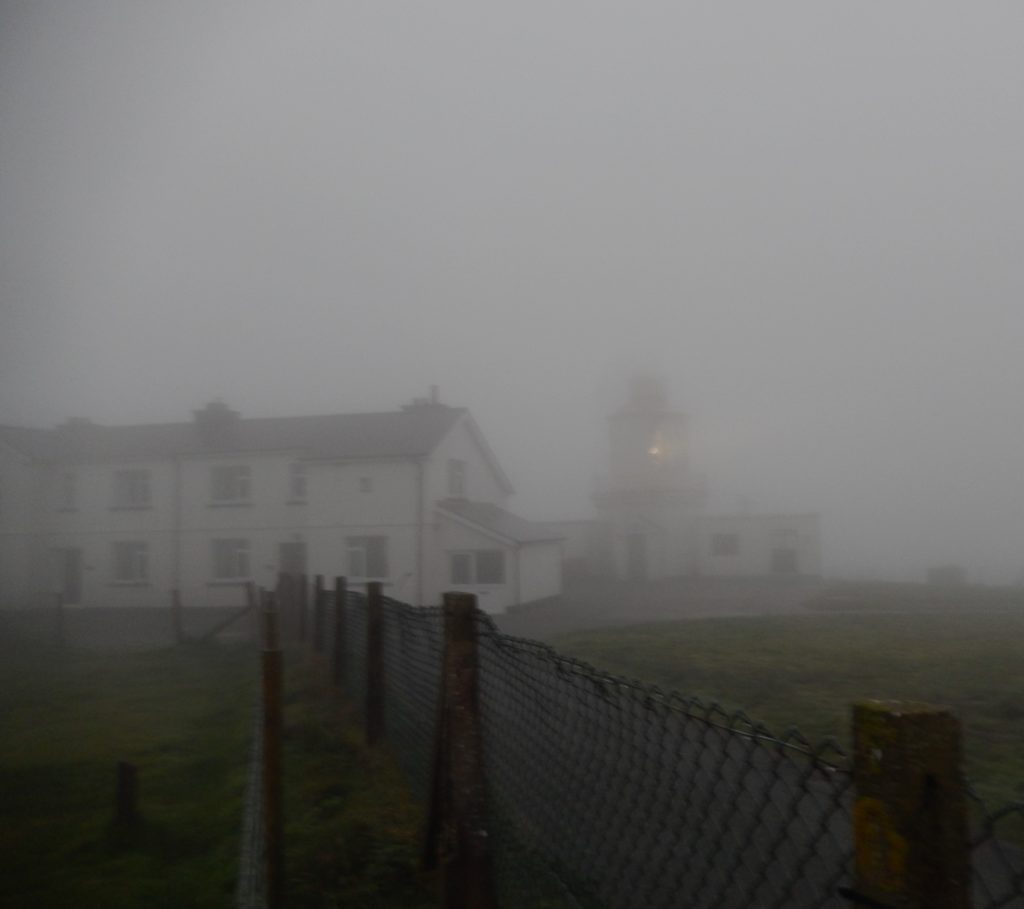
(Photo: Julie Brominicks)
The beam from the operating lighthouse is so compromised! A watched-for loved one’s torch hoving into view through misted glass. Seven soft winks between each two long zzinnnnngs. The sky has fallen down. The sea has risen to meet it. Fog is a ground level cloud. It consists of tiny airborne water droplets. I’m swimming through air, walking on water.
They didn’t explain their methodology, but huge thanks to the Ordnance Survey Cartology Department for clarifying the northwesterly, northeasterly, southeasterly and southwesterly points of Cymru.
Support our Nation today
For the price of a cup of coffee a month you can help us create an independent, not-for-profit, national news service for the people of Wales, by the people of Wales.





I have loved these articles so much. This describes my part of of Wales and shows it to me in new ways.
Thank you Catherine! Really glad you enjoyed them.